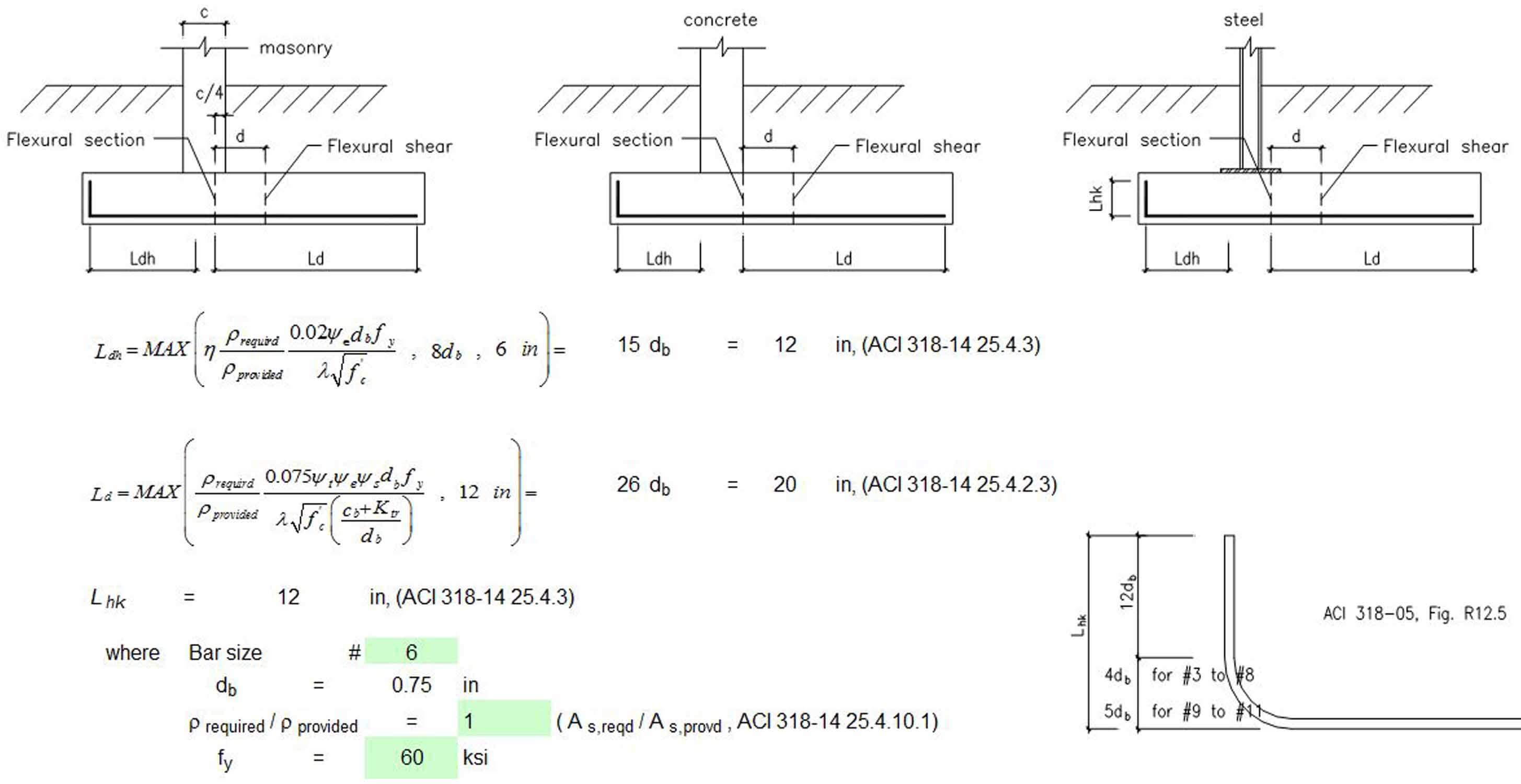Development length is a certain minimum length of the bar required on either side of a point of maximum steel stress, in order to transfer the bar force to surrounding concrete through the bond, without slip, so as to prevent the bar from pulling out under tension. This is “development length or anchorage length”. Hooks, bends, mechanical anchorages can be used to supplement. End anchorage may be considered reliable if the bar is embedded into concrete a prescribed distance is known as the “development length” of the bar. In a beam, if the actual extended length of the bar is equal or greater than this required development length, then no bond failure will occur. If the actual available length is inadequate for full development, special anchorages, such as hooks, must be provided to ensure adequate strength.
Methods for Determining the Development Length, ld
– The ACI allows the determination of the development length by two methods:
• Tabular criteria (ACI Section 12.2.2).
• General equation (ACI Section 12.2.3).
– In either case, ld shall not be less than 12 in.
– The general equation of the ACI Code offers a
simple approach that allows the user to see the effect of all variables controlling the
development length. A reduction in the development length ld is permitted where reinforcement is in excess of that required by analysis (except where anchorage or development for fy is specifically required or where the design includes provisions for seismic considerations). The method for determining the development length in compression ld involves finding the basic development length ldb and multiplying it by applicable modification factors.

